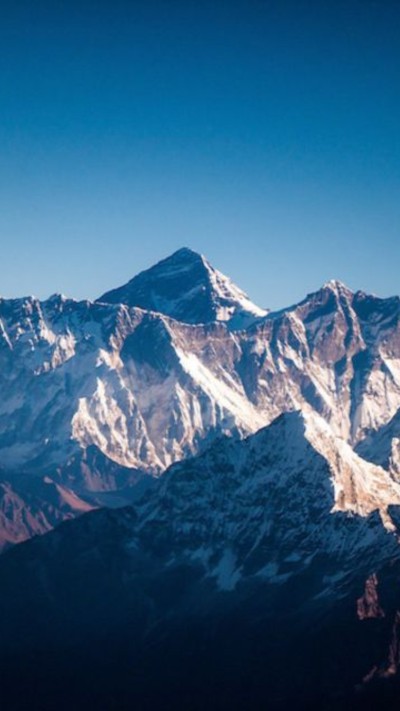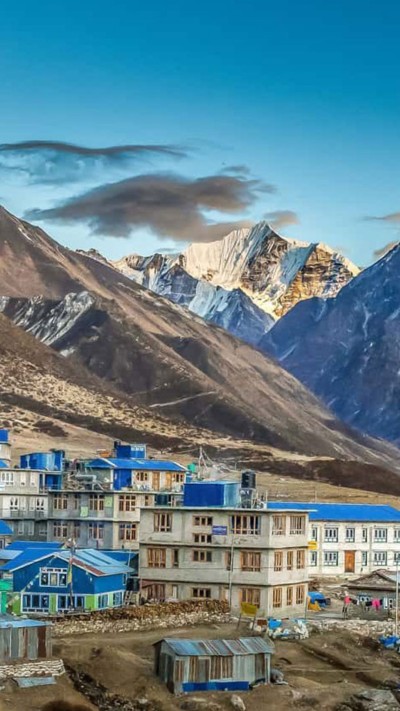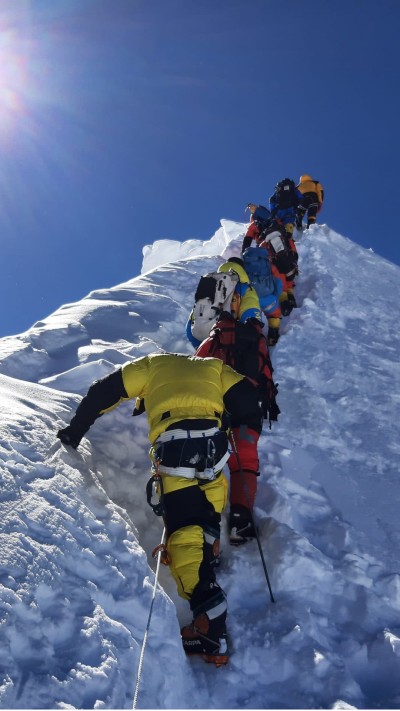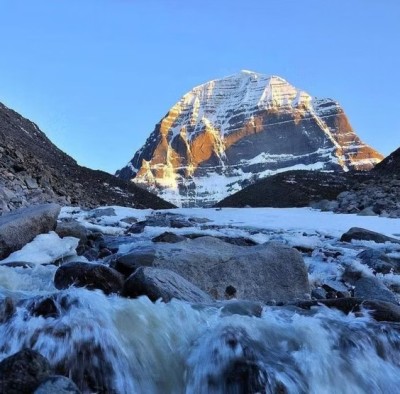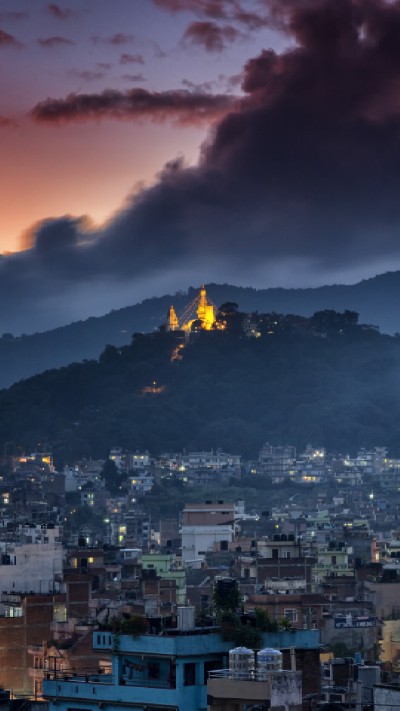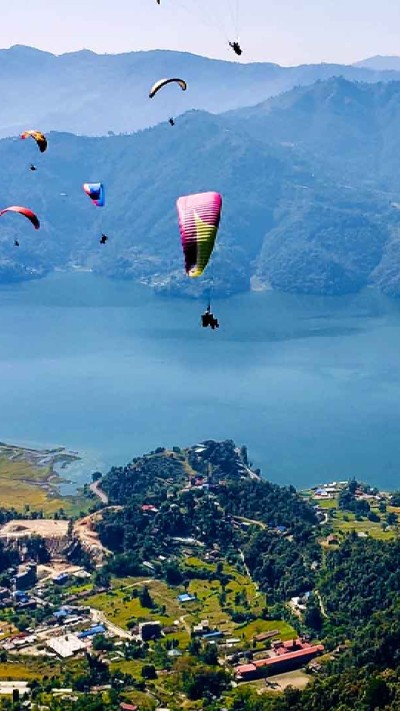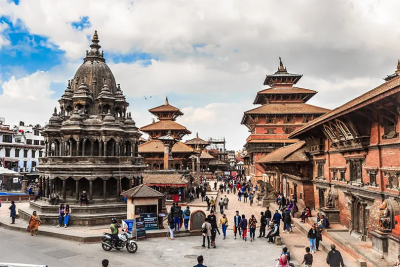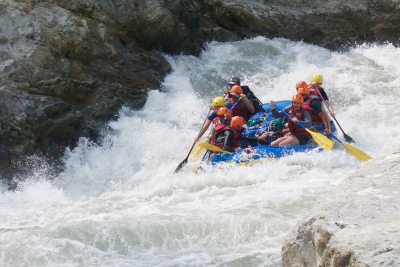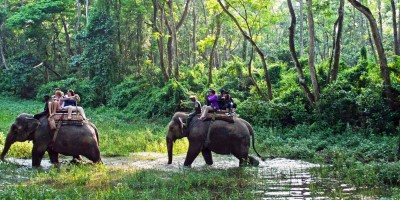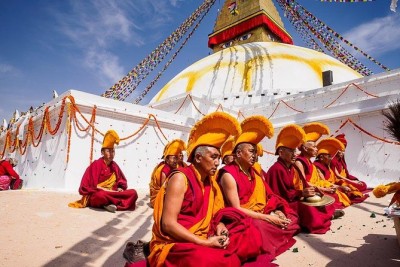EVEREST BASE CAMP DIFFICULTY | 9 REASONS WHY

The Everest Base Camp is a holy Mecca for trekkers from all over the world.
Don’t mean to put you off, but trekking to Everest Base Camp is no walk in the park.
Just visit any forum where this discussion is hot and you will hear contrasting opinions. So, it isn’t about how difficult Everest is, it is about how difficult it is to you.
Can’t I just fly to Everest Base Camp?
Absolutely. Tour managers operate occasional flights to Lukla and Kala Patthar and back (Pheriche, technically).
This is ideal for travelers who can’t (or don’t want to) go through a grueling trek to the base camp.
However, for whom the trek itself is a major highlight of the journey, this shouldn’t be strenuous. Well, isn’t it what we came for?
We explore some of the reasons why trekkers might consider Everest Base Camp a difficult trekking journey. These are the opinions of our trek guides whom we hand-pick ourselves in Himalayan Social Journey to provide trekkers the best experience. They have 10+ years of trekking experience on average.
1) It all starts with preparation
Our guides recommend everybody to start preparing for this special trek from at least 6 months ahead.
While they put the difficulty of this trek as “moderate”, the trek is still challenging for most of us westerners who have adapted to a sedentary lifestyle.
It is not just the trek that is tough to master. You have to go through a careful and extensive preparation phase.
We recommend a treadmill, gym, and hiking on nearby natural trails for a good chunk of time.
However, keep in mind that all these activities are no match for the mighty trail to Everest Base Camp. The trek itself is the final test of your endurance.
2) Cost/ Economic Difficulty
Yes, it doesn’t cost an arm and a leg to trek to the lap of Everest. However, the adventure isn’t a cheap one either.
The most common reason how trekkers get cheated is when they book their journey through “middlemen” travel agencies. These are “travel agencies” who book your trek and sell the contract to real travel agencies. Obviously, these fake agencies charge more than what it actually costs to get their rip.
Himalayan Social Journey is a real travel agency. Our own guides will take you to Everest Base Camp and back. That being said, we charge the minimum sum for you to make this trek.
3) Physical Difficulty
I am reminded of a movie scene in the movie A Few Good Men.
Even though the story is quite complex, this excerpt shows my point:
Col. Jessup : [refering to Santiago] I felt his life might be in danger.
Kaffee : Grave danger?
Col. Jessup : [sarcastically] Is there another kind?
If this is you, if you don’t call anything “threat” unless it incorporates your life in danger, the trek to Everest Base Camp still makes it to your threat-list.
In 2015, Kripasur Sherpa, the then Tourism Minister of Nepal, frankly said, “We cannot let everyone go on Everest and die. If they are not physically and mentally fit it will be like a legal suicide.”
While just trekking to the base camp of the peak of the world isn’t as fatal as the expedition to the peak itself, the possible complications cannot be ignored.
The Everest Base Camp is at an altitude of 5,380m from sea level. People start experiencing altitude-related problems from 3,000m and above.
The most common health issues are:
-
Altitude sickness
-
Hypothermia and severe frostbite
-
Slips and falls
-
Avalanche
-
Stormy blizzard/whiteout conditions
-
Poor Judgement/ Stubborn actions (Climbers forget that going up is optional but climbing down is mandatory.)
4) Climbing difficulty
It is said that 108 billion humans have roamed on earth since our species was born. However, since the first time Hillary and Norgay Sherpa scaled Everest, only about 4,000 have made it to the peak. As of now, about 400 submitters have lost their lives during the expedition.
What about the trek statistics to the base camp?
Every year, around 40,000 trekkers step on the Nepalese Base Camp of Everest.
Binod Dhakal, our trusted guide with around 10 years of experience, says–“It is possible for about 10% of trekkers in a group to sometimes not make it to the base camp for health issues.” If we have the slightest concern that somebody won’t make it, we get him back.
“Reaching up there is optional, but returning safely is a compulsion,” he says.
On a contrasting note, Pradip Tamang, who has 20+ years of experience as a guide, claims that not one of his members has had to cancel the trek for health issues.
Until now, we talked about the altitude and weather factor. But how difficult is the climbing route exactly?
5) Altitude Difficulty
We stated previously that people start experiencing altitude-related difficulty from 3,000m above sea level.
Keep in mind, however, that the probability of getting altitude sickness is not related to your age or other health conditions. Seemingly healthy individuals have a hard time and others might make it fairly easily. We can never tell.
But according to our guide Pradip Tamang, who claims that not one of his trekkers ever experienced any serious complication, there are some tips to stay safe.
For instance, trekkers should hydrate themselves enough even if the cold and the busy schedule makes it incredibly difficult. Tamang strictly forbids alcoholic beverages even if every climb up there entices celebration.
Similarly, you might want to eat fewer calorie-dense foods. As an example, trekkers might be better off with cheap vegetarian foods rather than meat items whose quality up there is questionable.
Needless to say, it is essential to keep yourself as warm as possible.
6) Difficulty according to season
Spring is an expedition time for Everest climbers. Thus, the trekking trail is bustling with climbers and trekkers who want to steal a few of their stories.
It is always exciting to talk to these climbers. The peak is the same, but the story of each one of them is worlds apart.
However, if you are one of the many who would better enjoy this journey in solitude, spring might not be the best time.
Also, it is really difficult to keep track of the porters and animals carrying huge loads while the eyes are fixated on the scenery.
On the other hand, it is a bit lonely and cold in the winter. Teahouses might burn kerosene for extra heat, which makes the already insufficient oxygen worse. It is possible to have headaches and a nauseated feeling.
7) Wildlife
There is no royal road to Everest Base Camp.
Everything from building materials to basic supplies has to be carried by a living soul–whether a porter or an animal.
Beasts of burden like Yaks and donkeys use the same trail that we do to get up there.
And the trail isn’t wide and smooth everywhere. We will be trekking up a hill that passes beside a river. If you get so fixated to get the perfect shot on your camera, the animals and poor porters with twice the load than their body mass might unknowingly knock you off.
We are dead serious about this. This has happened to many trekkers. While some got away with minor injuries, some never returned.
This is one of the countless reasons why it is better to take an experienced guide and a porter with you. He will take care of all your needs, accommodation, and keep you safe from such disasters. Contact us to learn more about this.
8) Is the trail safe everywhere?
We asked our guides if the hiking trail was safe everywhere.
In some places, because the glacier melts and shifts, hiking trails are washed. This is not a problem in the climbing season because somebody before you will have made a new trail. But at other times, expect to make your own way as you go.
In general, some paths go through gravel and loose rocks. Pay special attention. The old saying puts it perfectly–Watch where your feet go. Or you might injure yourself.
9) Acclimatizing
Acclimatization is a natural phenomenon in which the body adapts itself to the changing surrounding.
“Climb high, sleep low.”
This is going to be your mantra. For instance, If you go to the Everest View Hotel for the all-round view of the famous peaks, you gotta return a few meters down to stay the night.
This helps your body to better adapt to the rapidly changing altitude and surrounding.
Similarly, it is recommended to not put your body to an altitude change of more than 600m in a single day.
Moreover, allocate enough days to acclimatize, rest, and prepare your body for the rest of the journey.
Go through one of our Everest Base Camp Trekking Packages and all these will be taken care of for you.
Conclusion:
Thus, we can safely conclude that Everest Base Camp is not technically the hardest of trekking trails to conquer out there. However, the altitude and all the aforementioned challenges still make it the ultimate destination for trekkers all over the world.

